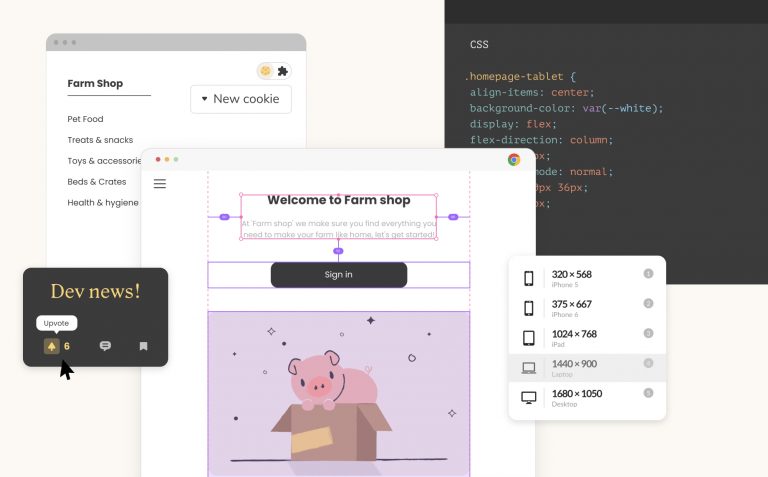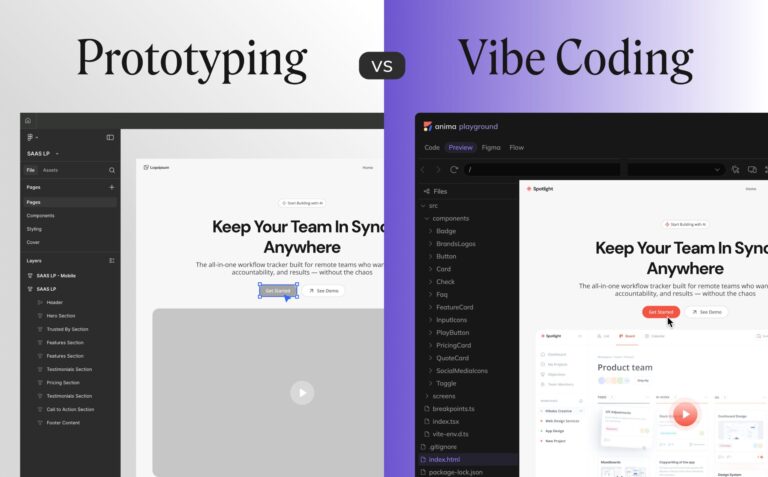What is the single source of truth: Storybook or Figma?4 min read
Reading Time: 3 minutesWhat is the Single Source of Truth: Your Codebase, Figma, or Storybook?
It’s an age-old question: as companies grow, it becomes increasingly difficult to determine the source of truth for design. Should your Figma designs or your code (directly or through Storybook) implementations guide your product’s design system? Let’s dive into these questions.
The Early Days: Startups and Open Source Design Libraries
In the beginning, startups often rely on open-source libraries like MUI or ShadCN. With small teams, design systems grow organically. However, as complexity increases and teams expand, design and code will start drifting apart as each of these teams have different priorities and standards. This is where Figma and Storybook often become key players.
Why Storybook and Figma Drift Apart
As teams scale, design system drift becomes a common issue. This refers to the divergence between:
- Figma components created by designers.
- Code components maintained by developers and often reflected through Storybook.
Storybook: A Reflection of Code
Storybook acts as a bridge between designers and developers, showcasing for designers (and developers) how code components behave and what options they have. Since Storybook is inherently tied to the codebase, typically the design system’s repo, it doesn’t help to solve inconsistencies between design and development. At best, it only reflects them to the detriment of the designer…
Figma: A Designer’s Playground
Figma empowers designers to create, iterate, and innovate. Companies now often use it to create a catalog of design components, but those components do not always correspond to how code is structured. Many designers still use flat unstructured designs, some may detach components and break from the design library, and in companies where design teams are separated from the code teams, they may be used as design replication instruments and not as a 1:1 reflection of the design system.
All this makes maintaining a golden source of truth: a 1:1 relationship between Figma components and code components is resource-intensive and often impractical.
Resolving Design System Drift
Optimal Practices for Alignment
- 1:1 Relationships: Ideally, for every Figma component, there should be a corresponding code component in Storybook.
- Variant Management: Both systems should agree on variants like “Large,” “Medium,” and “Small” or features like icons.
- Breaking Components: Simplify complex grids in Figma by splitting components (e.g., “Button” vs. “ButtonWithIcon”), even if code components remain unified.
Challenges
Even with best practices, maintaining alignment requires dedicated design system teams. But these teams often face:
- Resistance to Change: Innovating teams may push for new designs that conflict with the standardized system.
- Documentation Issues: Keeping documentation and Storybook updated is a constant struggle.
Figma vs. Storybook: Strengths and Limitations
|
Feature |
Figma |
Storybook |
|
Contributor |
Designers |
Developers |
|
Strengths |
Flexible, visual design, collaborative tools |
Code-centric, behavior-focused, developer-friendly |
|
Weaknesses |
Requires manual updates for code alignment |
Hard to maintain without frequent updates |
|
Integration |
Limited direct code connection |
Mirrors code but doesn’t integrate with design easily |
Siloed Teams and Onboarding Challenges
Another issue is team silos. Design and development teams often work independently, leading to divergent workflows and philosophies. This creates onboarding challenges for new developers, who struggle with:
- Outdated documentation.
- Difficulty identifying the right components.
- Misuse of atomic and composition components.
Figma Code Connect: A Partial Solution?
Figma Code Connect aims to bridge this gap by generating code from Figma designs. However:
- It requires strict 1:1 relationships between design and code.
- It’s limited to enterprises and demands significant engineering resources.
- It requires pretty sophisticated access rights for the design and dev teams in order to use, and dev mode for the developers to be able to use code-connect.
- It doesn’t address higher-level scaffolding or compositions.
Frontier by Anima: A Unified Solution
Frontier is our answer to the Storybook vs. Figma dilemma. It redefines design systems by:
- Dynamic Matching: Mapping Figma components to their Storybook counterparts without requiring 1:1 relationships.
- Living Documentation: Automatically generating up-to-date code based on the latest Figma designs and codebase.
- Developer-Centric Onboarding: Providing reference implementations to help developers quickly understand the design system.
By bridging the gap between Storybook and Figma, Frontier accelerates workflows and allows work despite design system drift.
A Collaborative Future
Design and development teams need tools that foster collaboration without imposing rigid constraints. By leveraging solutions like Frontier, companies can align Figma, Storybook, and codebase components to create a unified design system that evolves with their products.
Curious about how Frontier can simplify your design-to-code workflow? Learn more here and start aligning your Figma and Storybook components today!

Not an Anima user yet? Signup here


 Figma
Figma Adobe XD
Adobe XD Blog
Blog



